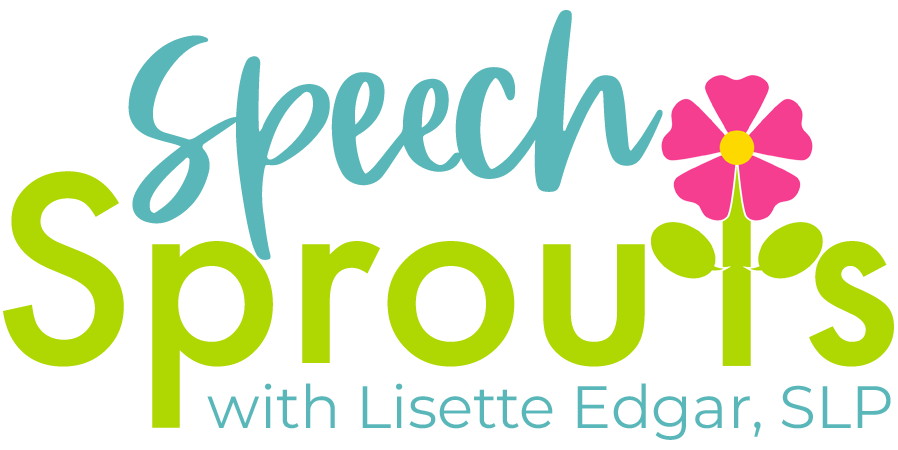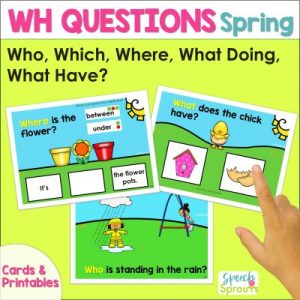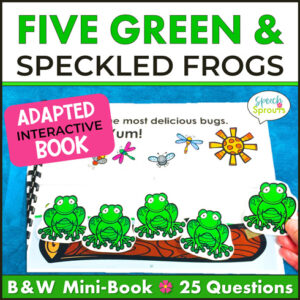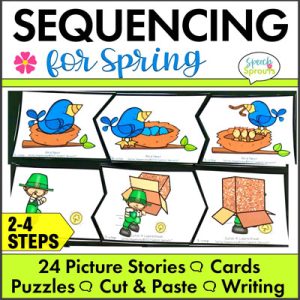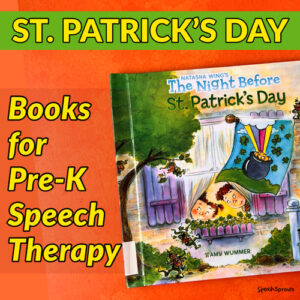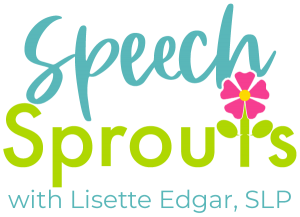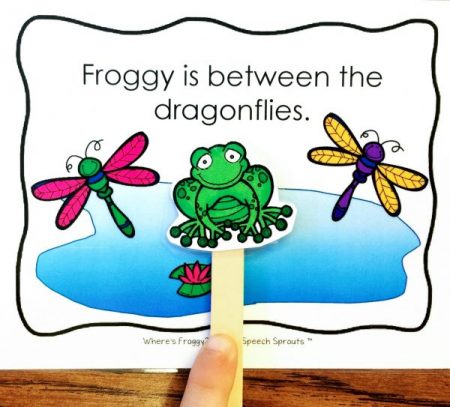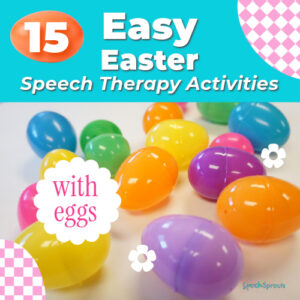
You Need to Make This Adorable Easy Ladybug Craft
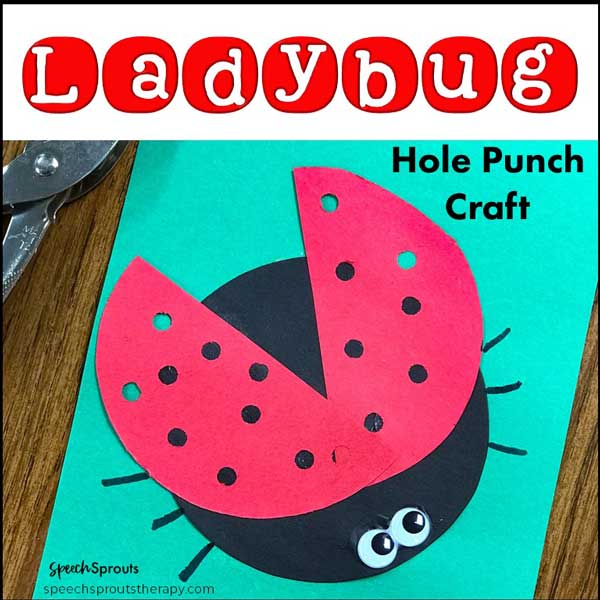
Make this oh-so-cute easy ladybug craft with your preschoolers for your bug theme!
Do you use themes in speech therapy? I love them, especially for my preschoolers.
This week we were talking about bugs in my preschool speech therapy sessions. It’s a perfect spring or summer theme and fits right in with most preschool and kindergarten science lessons this time of year.
This paper hole punch ladybug craft was a hit with my preschoolers and my older children wanted to try it too. Just adorable, and each one turned out a bit different.
Some crafts take too much time away from articulation practice, but not this one.
We got plenty of repetitions as we practiced our /l/ words while we punched each hole: “light, light, light, lamb, lamb, lamb.”
Of course, you can do that with any phoneme.
Here’s what you need for this easy ladybug craft for preschool speech therapy.
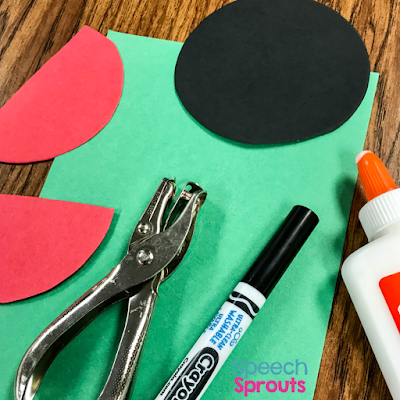 |
| Add two wiggle eyes to these supplies to make your ladybug. |
Supplies:
- green construction paper
- red construction paper
- black construction paper
- two wiggle eyes per child. I used 12 mm ones.
- glue
- a marker
- a hole punch
This ladybug craft is simple enough for preschoolers with a bit of help. Here’s how:
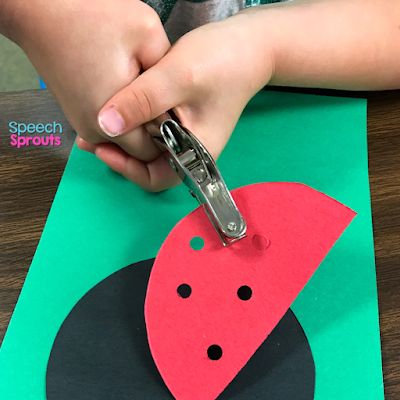 |
| Punch holes in the ladybug wings for the spots. |
-
- Cut out two circles of the same size for each ladybug. One red, one black. For my preschoolers, I used die-cut circles. Older children can trace and cut their own.
- Cut the red circle in half to make the wings.
- Glue the black circle on first.
- Punch holes in both wings. (Some of my preschoolers need me to hold the wings for them, or give the nose of the hole punch a helping squeeze.
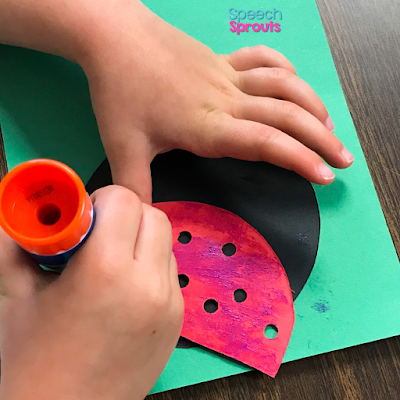 |
| Glue the red ladybug wings flared out like a “V”. |
- Glue the wings on the black circle leaving a little black showing at the top. (The eyes will go there) Make one end of each wing meet in the middle ( an upside-down “v”).
- Glue on the wiggle eyes.
- Use a black marker to make six legs.
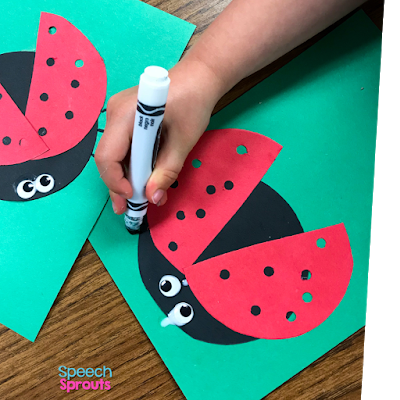 |
| Add wiggle eyes and use a black marker to give your ladybug 6 legs. |
Next, grab some toy bugs and target articulation of final /g/, initial /l/, and then categorize even more creepy, crawly insects.
Which ones hop? Crawl? Have wings? Don’t forget to include question comprehension either. How many legs do insects have? Are ladybugs insects? Where do you find ladybugs?
We got plenty of repetitions as we practiced our /l/ words while we punched each hole: “leaf, leaf , leaf, or look, look, look.” Or have fun practicing final /g/ with “Big bug, big bug.”
Of course, you practice any phoneme this way.
Read some great ladybug picture books to go along with your ladybug craft!
- characters and a plot that children can relate to.
- repetitive text to help them participate and retell the story.
- sound-loaded text for articulation practice.
The Very Lazy Ladybug by Isobel Finn and illustrated by Jack Tickle
Don’t you love those names? Finn and Tickle…with names like that you know it’s going to be fantastically fun! The authors are from England and you’ll find there are two versions of the story… one which calls the little red bug a ladybird, and one where it’s a ladybug.
The very lazy ladybug in this tale liked to sleep all day and all night on a flower.
One day she decided it would be nice to sleep somewhere else. Since she had never bothered to learn to fly, she decided to hop into the pouch of a kangaroo who was passing by. When that didn’t go well, she tries to hitch a ride with a series of other animals.. all ending badly!
Here’s why this story is great for speech therapy:
- repetitive text. “I can’t sleep here, cries the lazy ladybug!”
- a recurring series of events
- sound-loaded: initial /l/, initial /k/, final /g/ and /sl/ for articulation practice
- chock-full of verbs to talk about and practice past tense when retelling: hopped, jumped, padded, ambled, trundled, sneezed, swung, swish, roar, scratch, snooze
- animal characters to name: kangaroo, tiger, crocodile, monkey, bear, tortoise, elephant
- the fun story begs for answering “where” questions. Where did the ladybug hop? head, tail, pouch…
The Very Grouchy Ladybug by Eric Carle.
- repetitive text
- a recurring series of events
- sound-loaded: initial /l/, final /g//, initial /b/, initial and final /f/
- animal characters to name
- social skills discussions: sharing
We finished up by learning body parts with this ladybug song for preschoolers
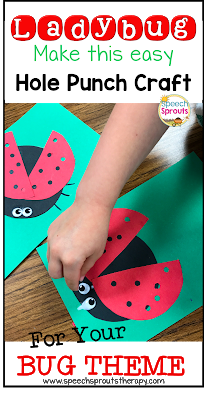 |
| Pin this post for later: Easy Ladybug Craft for Preschool |
Save these ladybug ideas to make them easy to find each year.
Need some done-for-you spring resources for your littles?
Here are a few favorites.
Share it:
- Read more about: Preschool, Storybooks, Themes
